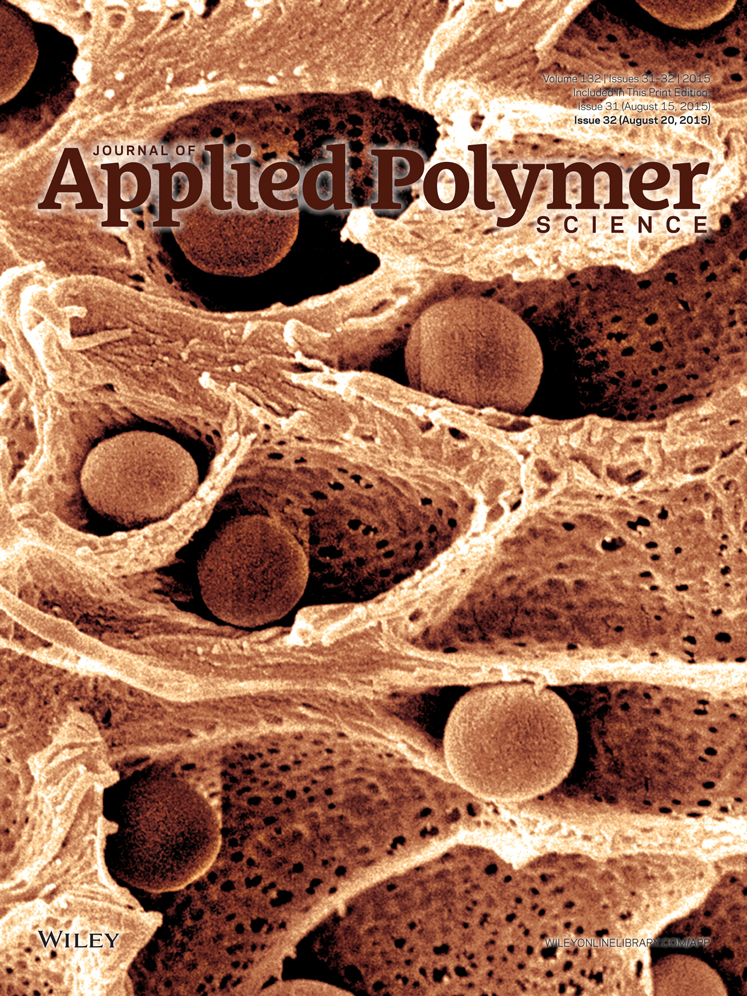Physical properties and crystallization behavior of poly(lactide)/poly(methyl methacrylate)/silica composites
ABSTRACT
Poly(lactide)/poly(methyl methacrylate)/silica (PLA/PMMA/SiO2) composites were fabricated using a twin-screw extruder. Nanosilica particles were incorporated to improve the toughness of the brittle PLA, and a chain extender reagent (Joncryl ADR 4368S) was used to reduce the hydrolysis of the PLA during fabrication. Highly transparent PLA and PMMA were designated to blend to obtain the miscible and transparent blends. To estimate the performance of the PLA/PMMA/SiO2 composites, a series of measurements was conducted, including tensile and Izod impact tests, light transmission and haze measurements, thermomechanical analysis, and isothermal crystallization behavior determination. A chain extender increases the ultimate tensile strength of the PLA/PMMA/SiO2 composites by ∼43%, and both a chain extender and nanosilica particles increase Young's modulus and Izod impact strength of the composites. Including 0.5 wt % nanosilica particles increase the elongation at break and Izod impact strength by ∼287 and 163%, respectively, compared with those of the neat PLA. On account of the mechanical performances, the optimal blending ratio may be between PLA/PMMA/SiO2 (90/10) and PLA/PMMA/SiO2 (80/20). The total light transmittance of the PLA/PMMA/SiO2 composites reaches as high as 91%, indicating a high miscible PLA/PMMA blend. The haze value of the PLA/PMMA/SiO2 composites is less than 35%. Incorporating nanosilica particles can increase the crystallization sites and crystallinities of the PLA/PMMA/SiO2 composites with a simultaneous decrease of the spherulite dimension. © 2015 Wiley Periodicals, Inc. J. Appl. Polym. Sci. 2015, 132, 42378.




